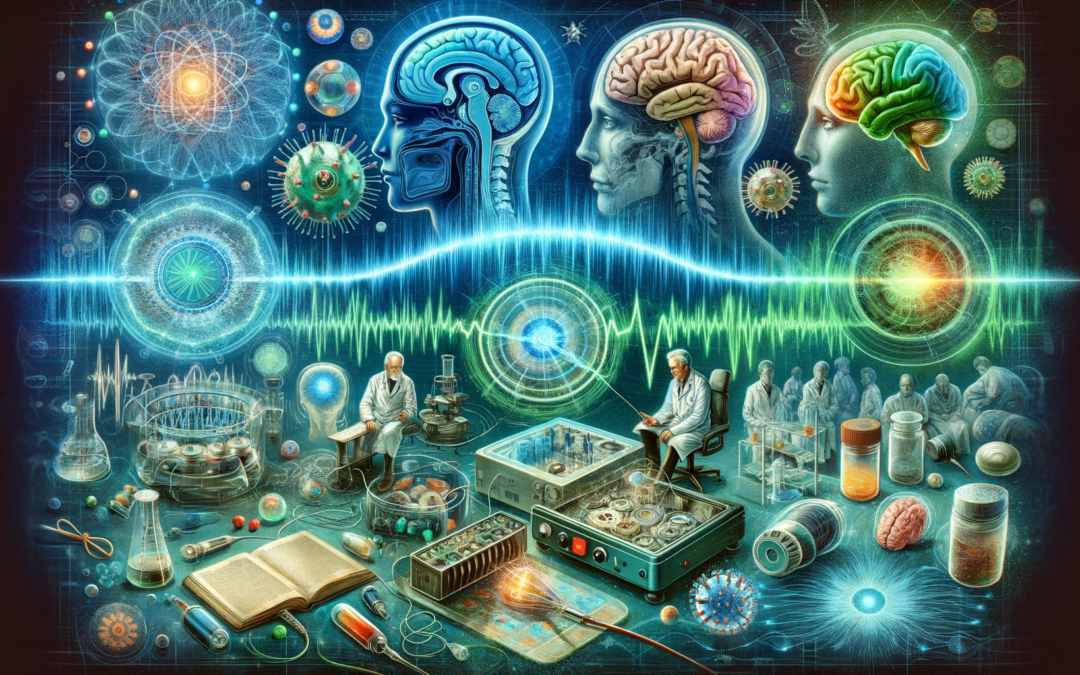Section 2: Historical and Modern Applications
The exploration of electromagnetic energy in the realm of medicine and experimentation is a journey that spans over a century, revealing a landscape marked by groundbreaking discoveries and diverse applications. From early therapeutic techniques to modern-day neurological research, the utilization of electromagnetic energy has continually evolved, offering both fascinating insights and raising complex ethical questions.
Historical Applications:
Electroconvulsive Therapy (ECT): Originating in the early 20th century, ECT emerged as a psychiatric treatment for severe mental illnesses, notably depression and schizophrenia. Initially developed by Italian neuropsychiatrists Ugo Cerletti and Lucio Bini in 1938, this therapy involves the induction of controlled seizures in patients by passing electrical currents through the brain. Despite its controversial history and portrayal in media, ECT has been refined over the decades and is still used today, albeit under strict medical guidelines, for treatment-resistant depression and other severe mental disorders.
Deep Brain Stimulation (DBS): Deep Brain Stimulation, a neurosurgical procedure introduced in the 1980s, involves implanting a device that sends electrical impulses to specific areas in the brain. DBS is primarily used to treat movement disorders like Parkinson’s disease, dystonia, and essential tremor, and has shown remarkable success in reducing symptoms and improving quality of life. Ongoing research is exploring its potential in treating psychiatric disorders like major depression and obsessive-compulsive disorder (OCD).
Contemporary Applications:
Neurological Research: Advances in electromagnetic technology have opened new frontiers in brain research. Techniques like transcranial magnetic stimulation (TMS) and functional magnetic resonance imaging (fMRI) allow scientists to study brain function and connectivity non-invasively. These technologies are crucial in understanding neurological conditions, brain plasticity, and even cognitive processes like learning and memory.
Therapeutic Uses: Beyond ECT and DBS, other forms of electromagnetic therapy are being explored for various health conditions. For instance, repetitive TMS (rTMS) is gaining attention for treating depression and chronic pain. The use of pulsed electromagnetic field therapy (PEMF) is being explored for bone healing, pain management, and inflammatory diseases.
Military Applications: The potential military applications of electromagnetic energy have been a subject of interest and concern. Research in this area, often shrouded in secrecy, focuses on areas like crowd control, non-lethal weaponry, and even enhancement of soldier performance. There’s growing interest in the defense sector for technologies that could leverage electromagnetic energy for communication, surveillance, and possibly mind-control applications.
The journey of electromagnetic energy in medical and experimental contexts is a testament to human ingenuity and the quest for understanding the most complex organ in the human body – the brain. While the historical applications laid the groundwork, contemporary uses continue to expand the boundaries of what’s possible, offering hope for numerous health conditions and advancing our understanding of the human mind. However, as with any powerful technology, these applications come with significant ethical considerations, particularly regarding consent, safety, and the potential for misuse, especially in military contexts. The future of electromagnetic energy in medicine and research holds great promise but must be navigated with care and responsibility.










